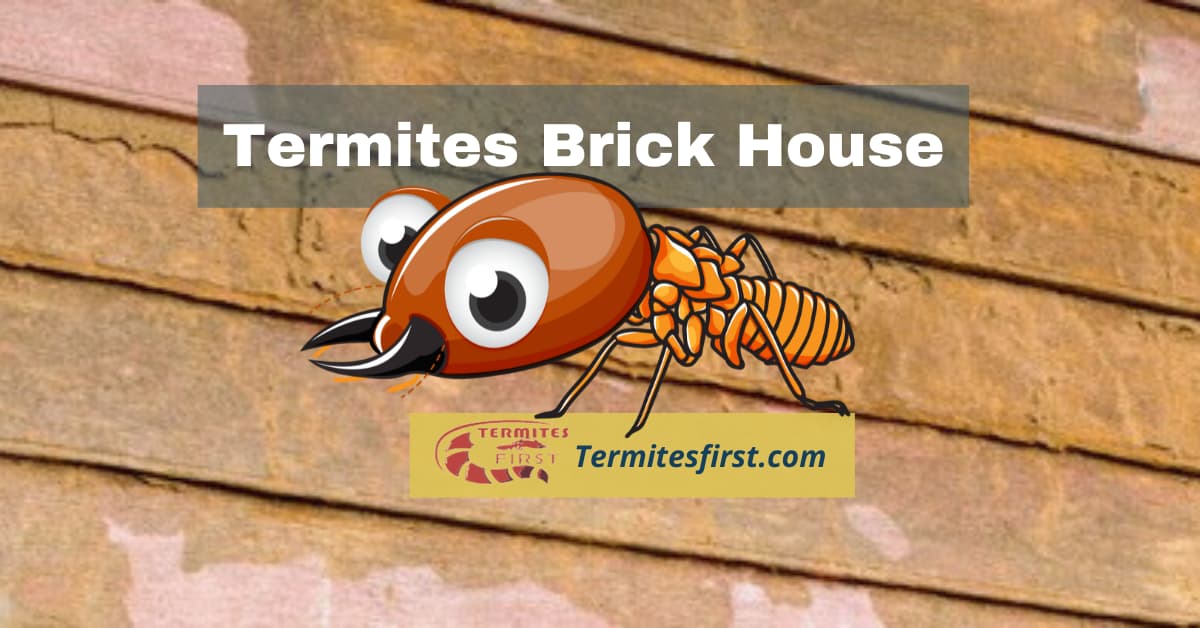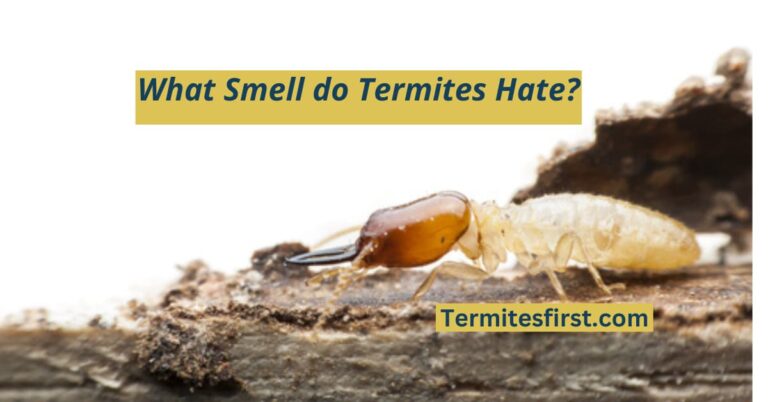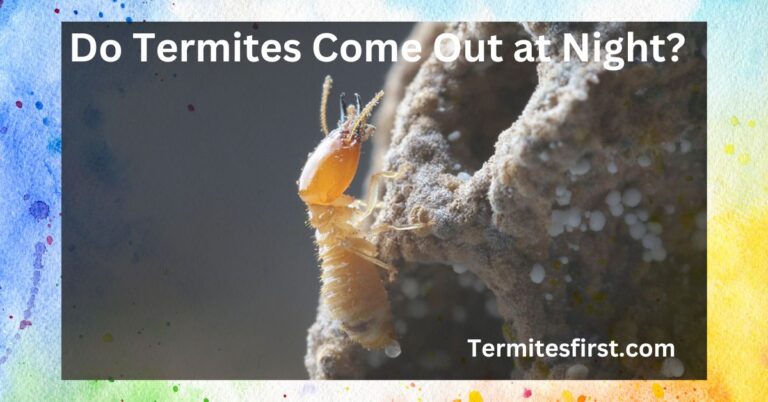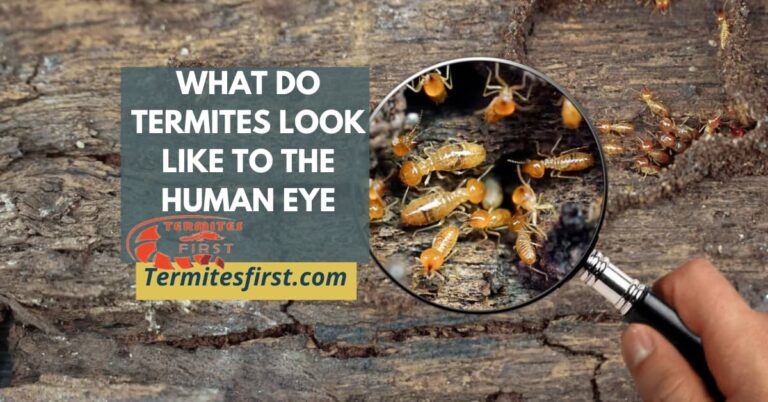Termites Brick House: A Complete Guide
Did you know that termites cause over $5 billion in property damages each year in the U.S. alone, affecting many brick homes with their brick veneers and brick defenses? As a homeowner, I find this statistic alarming. Termites can wreak havoc on my brick house without me even knowing it. Worker termites silently munch away at the structure, compromising its integrity and value during an extensive termite attack.
Understanding how these pests operate is crucial for prevention. I want to share practical tips on several ways termites can protect my home from termite infestations, including how worker termites chew and the impact of drywood termites. Knowing the signs of damage and taking early action, including termite prevention tips, can save me from costly repairs due to an extensive termite attack from drywood termites or the need for subterranean termite protection. In this post, I’ll dive into effective strategies for subterranean termite protection to keep my brick house safe from these destructive insects. Let’s use make sure my home remains a fortress against termites!
Key Takeaways
- Termites can still pose a risk to brick homes, especially in areas where wood is present, like framing and flooring, and they use these materials to thrive. Regular inspections are crucial.
- Use common areas to check for termite damage, such as basements and crawl spaces, to catch any infestations early.
- Be aware of signs of termite damage, including mud tubes and hollow-sounding wood, to identify problems before they worsen.
- Protect your brick home by sealing gaps and ensuring proper drainage to reduce moisture, which attracts termites.
- Understand that subterranean termites can travel through soil and reach your home, so prevention strategies are essential.
- Don’t believe myths that brick homes are completely safe from termites; consider professional inspections to ensure your home is protected.
Understanding Termite Risks in Brick Homes
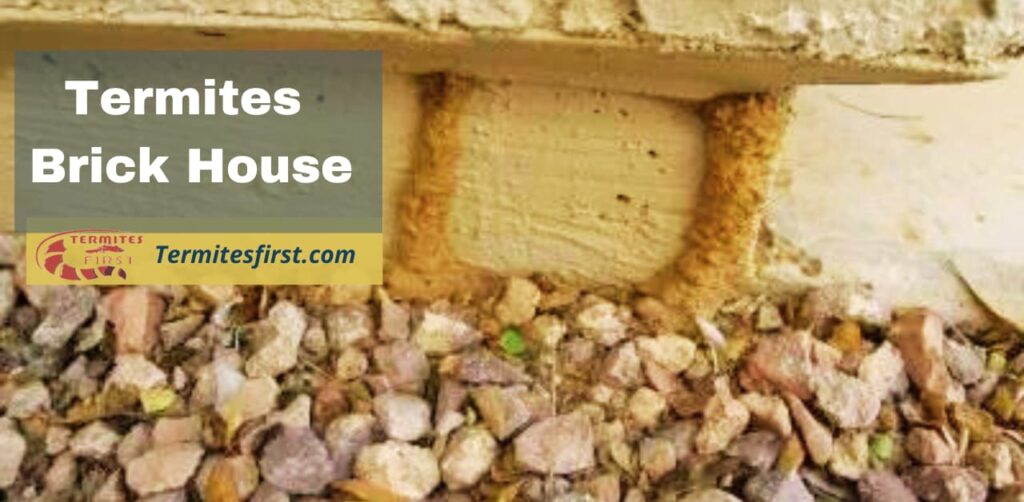
Hidden Structures
Brick homes often contain hidden wooden structures. These areas can be vulnerable to termites. I learned this when I inspected my own home. The brick exterior looked solid, but I discovered wooden beams in the attic, raising concerns about subterranean termite protection. Termites can thrive in these hidden spots, causing damage without anyone noticing.
Termites seek out wood for food. They can enter through small openings. Even a tiny crack can lead to an infestation. Homeowners need to be aware of these risks. Regular inspections can help catch problems early.
Exterior Protection
A solid brick exterior does not guarantee protection against termites. Many people believe that brick is enough for subterranean termite protection to keep pests out. However, this misconception can lead to serious issues. I once thought my brick house was safe until I found signs of termite activity.
The foundation and other wooden elements are still at risk. Termites can tunnel through soil and reach wooden parts of the structure. It is crucial to remember that brick alone cannot prevent termite damage.
Inspecting for Entry Points
Inspecting for cracks and gaps is essential for termite prevention. These openings allow termites easy access to your home. I often check around windows and doors for any signs of wear and tear. Even small gaps should not be ignored.
Homeowners should also look at the foundation closely. Any cracks in the brick or mortar could be a potential entry point for termites. Sealing these gaps can reduce the likelihood of infestations significantly.
Regular maintenance is key to protecting your home from termites. Keeping gutters clean helps prevent moisture buildup, which attracts pests. Proper landscaping also plays a role; avoid placing mulch directly against the house.
Importance of Professional Help
When dealing with termites in a brick house, it’s often wise to hire professionals for a comprehensive inspection. Pest control specialists are trained to identify signs of infestations and know the most effective treatment methods. Taking this precaution can help homeowners avoid expensive repairs in the future.
I recommend getting an annual inspection, especially if you live in an area prone to termites. Early detection makes a huge difference in managing termite risks.
Common Areas for Termite Damage
Wooden Frames
Wooden frames in a house are prime targets for termite entry. These structures support doors and windows. Termites find their way through cracks or gaps. I have seen how quickly they can destroy wooden materials. They thrive on the cellulose found in wood.
Regular inspections of these areas can help catch infestations early. Signs include small holes or frass, which look like tiny wood shavings. Homeowners should pay close attention to any changes in the wood’s texture.
Basements and Crawl Spaces
Basements and crawl spaces often go unnoticed. Yet, they can harbor significant termite activity. The dark and damp conditions are perfect for these pests. Many people overlook these areas because they are hard to access.
I remember a friend who discovered termites in her crawl space after years of neglect. She faced costly repairs due to extensive damage. Regular checks in these areas can prevent similar situations.
High Moisture Levels
Moisture plays a crucial role in attracting termites. Areas with high moisture levels are at greater risk for damage. Plumbing leaks create ideal conditions for termites to thrive. Water pooling near foundations can lead to severe issues.
Termites need moisture to survive, making it essential to fix leaks promptly. I learned this the hard way after noticing water stains on my walls. It turned out that a small leak had allowed termites to invade.
Cracks in Walls and Foundations
Cracks in walls and foundations provide easy access for termites. These openings allow pests to enter without detection. Often, homeowners do not notice them until it’s too late.
Sealing cracks is an effective preventive measure. Regular maintenance of the building’s exterior is vital to keep termites out. I always check for any signs of wear and tear around my home.
Soil and Concrete Slabs
l around concrete slabs can also be a concern. Moist soil creates a conducive environment for termite activity. Termites can tunnel through soil and reach wooden structures easily.
Concrete slabs may seem solid, but they are not immune to damage. Any connection between wood and soil increases risk factors significantly. Keeping the area dry is essential for prevention.
Identifying Termite Damage Signs
Mud Tubes
Mud tubes are a clear indicator of subterranean termite presence. These tubes connect their underground colonies to above-ground food sources. I often find them along foundation walls, especially in damp areas. The tubes are about the width of a pencil and look like dirt or mud. If you spot these, it’s crucial to act fast. They show that termites are actively trying to access your home.
Hollow Wood
Hollow-sounding wood can signal active termite feeding. When I knock on wooden structures, I listen carefully. If the sound is dull or hollow, termites might be chewing away inside. This damage can weaken the structure over time, leading to costly repairs. Frass, which is termite droppings, may also be present near infested wood. It looks like small pellets and can indicate a drywood termite infestation.
Structural Changes
Unexplained structural changes in your home should raise red flags. Look for sagging ceilings or floors that feel uneven. I’ve seen homes where door frames were misaligned due to termite damage. These signs can indicate that termites have chewed through critical support beams. Inspecting these areas regularly can help catch problems early.
Other Signs of Infestation
Several ways termites may reveal their presence include discarded wings and mud tunnels. After swarming season, you might notice wings near windowsills or doors. This indicates that a colony has formed nearby. Checking these areas regularly can help identify potential infestations before they worsen.
Importance of Inspections
Regular termite inspections are essential for homeowners. I recommend scheduling one at least once a year. Professionals know what to look for and can detect issues early on. They use tools like moisture meters and infrared cameras to find hidden damage. Early detection can save thousands in repairs.
Importance of Protecting Brick Homes
Financial Implications
Termites can cause significant damage to brick homes. While bricks are durable, they are not immune to infestations. Damage from termites can lead to costly repairs. I remember a friend who faced this issue. She thought her classic brick home was safe until termites invaded. The repair costs were overwhelming.
Repairing termite damage can affect property value. A home with structural issues may sell for less. Buyers often look for signs of infestations or damage. They may reject a property if they see any signs of termites. Homeowners must consider these financial implications seriously.
Proactive Measures
Taking proactive measures is essential for safeguarding against termites. Many brick houses have vulnerabilities that can be exploited by these pests. Sealing brick mortar joints and inspecting brick veneers regularly helps prevent infestations. I check my own home often to ensure there are no cracks or gaps in the brickwork.
Installing a brick barrier around the foundation can also protect against termites. This barrier prevents moisture accumulation, which attracts pests. Regular inspections by pest control professionals provide peace of mind. They can identify potential threats before they become serious problems.
Regular Maintenance
Regular maintenance is crucial for long-term protection of brick structures. Homeowners should inspect their properties frequently for signs of wear and tear. This includes checking the condition of bricks and looking for signs of damage.
I’ve learned that maintaining the integrity of structural bricks is vital. Keeping gutters clean prevents water from pooling near the foundation. Proper drainage reduces the risk of termite attraction as well.
Monitoring for moisture issues is another key aspect of maintenance. Termites thrive in damp environments, so ensuring good ventilation is important. Homeowners should also trim any trees or shrubs that touch the house. These plants can provide easy access for termites.
Subterranean Termite Threats
Constant Threat
Subterranean termites are relentless in their search for food. They can invade homes, including brick houses, by exploiting even the smallest openings. This makes them a significant threat to homeowners.
I have seen how quickly these pests can cause damage. A friend of mine faced an extensive termite attack that started with a few unnoticed signs. By the time she discovered the problem, the damage was severe.
Detection Challenges
Detecting subterranean termites is often difficult. Their underground behavior hides them from plain view. Many times, homeowners do not realize they have a termite infestation until it is too late.
Termite colonies can grow rapidly. They may contain thousands of worker termites that work around the clock. These workers create tunnels and galleries within wooden structures, making detection harder.
Ongoing Infestation Risks
An ongoing termite infestation can lead to serious structural issues. The longer the infestation goes undetected, the more damage occurs. Homeowners must be vigilant to prevent a termite invasion.
I learned about termite prevention tips early on as a homeowner. Regular inspections and monitoring can help catch infestations before they escalate. Simple steps like sealing cracks and ensuring proper drainage can make a difference.
Protective Measures
Termite protection is crucial for maintaining a safe home. Installing a termite barrier around your property is one effective method. This barrier acts as a shield against unwanted termite visitors.
Using bait stations can also help manage subterranean termites. These bait systems attract termites and eliminate them before they reach your home. It’s essential to consult professionals for the best options tailored to your home’s needs.
Super Termites
Super termites pose an even greater risk than regular subterranean termites. These pests are more resistant to traditional treatments. They can cause rapid destruction, making it vital to stay informed about their presence.
Awareness of super termites has changed how I approach pest control. I now prioritize preventive measures over reactive ones. Being proactive reduces my chances of dealing with an extensive termite infestation.
Effective Prevention Strategies
Physical Barriers
Implementing physical barriers is crucial in protecting a brick house from termites. Metal shields can be installed around the foundation. These barriers block termites from entering the home. I remember when my neighbor had to deal with a termite problem. They installed metal barriers, and it made a huge difference.
Another option is to use concrete or gravel as a barrier. These materials are less attractive to termites. They create an environment that is hard for termites to navigate. It’s important to ensure these barriers remain intact and undamaged over time.
Regular Inspections
Scheduling regular professional inspections can help catch early signs of termite activity. Experts recommend having inspections at least once a year. Termites can cause significant damage if left unchecked.
During an inspection, professionals look for signs of infestation, such as mud tubes or damaged wood. Early detection can save homeowners money and stress in the long run. I had an inspection done last year, and it provided peace of mind knowing my home was safe.
Moisture Control
Maintaining proper drainage around the foundation is essential to minimize termite attraction. Termites thrive in moist environments. Keeping gutters clean helps direct water away from the house.
Reducing moisture levels in and around the home can deter termites effectively. Homeowners should also check for leaks in plumbing or roofs. Fixing these issues promptly can prevent attracting unwanted pests.
Interior Precautions
Using certain materials inside the home can also help prevent termite problems. Avoid using wood products that are untreated or not resistant to termites. Instead, opt for treated lumber or alternative materials like metal or plastic.
Removing wallpaper can reduce potential hiding spots for termites. Wallpaper may trap moisture behind it, creating an inviting environment for pests. I learned this tip after reading about termite prevention methods.
Myths About Termites and Brick Houses
Brick Safety
Many believe that brick houses are completely safe from termites. This is a common myth. While brick is not a food source for these pests, it does not guarantee protection. Termites primarily target wood, but they can also damage other materials if wood is present. For instance, they can access wooden beams or furniture inside a brick house.
I once thought my brick home was invulnerable. After learning more about termite behavior, I realized that vigilance is key. Regular inspections are necessary even for homes made of concrete and brick.
Material Misconceptions
Some people think termites only eat wood. This misunderstanding overlooks their ability to damage various materials. They can infest any structure where wood is present. Even in a brick house, if there are wooden elements, termites may find a way to invade.
For example, if your home has wooden siding or framing, it becomes vulnerable. Termites can enter through cracks in the foundation or gaps around pipes. I’ve seen this happen in homes similar to mine. It’s crucial to identify potential entry points and seal them.
Treatment Neglect
Another myth is that termite treatments are unnecessary for brick houses. This belief can lead to significant issues down the line. Regular treatment is essential regardless of the home’s material composition. Ignoring this can result in costly repairs later.
I learned that even with a brick exterior, my home needed regular pest control checks. I found out that preventative measures help catch problems early. Treatments like bait systems or liquid barriers work effectively against termites.
Importance of Inspections
Homeowners should prioritize routine inspections. These checks help detect signs of termite activity before serious damage occurs. Signs include mud tubes on walls or hollow-sounding wood.
In my experience, scheduling annual inspections gives peace of mind. Professionals know what to look for and can provide targeted treatments if needed.
Professional Inspection Benefits
Expertise in Identification
Professionals possess the knowledge to identify hidden termite damage. They understand the signs of infestation that many homeowners might overlook. Termites can cause significant harm inside walls and foundations, especially in brick houses. I remember when I first learned about the extent of damage termites could inflict. It was eye-opening to realize that they often work silently for years before becoming visible.
A trained inspector knows where to look for signs of infestation. They check areas like basements, attics, and crawl spaces. These locations are common hiding spots for termites. Their experience allows them to assess the situation accurately. This expertise ensures that any existing damage is discovered early.
Importance of Thorough Inspections
A thorough inspection is essential for developing an effective treatment plan. Without a complete assessment, it’s easy to miss critical areas where termites may be active. Homeowners should not wait until they see physical signs of termites. By then, the damage might already be extensive.
The process typically involves checking both the interior and exterior of the home. Inspectors will examine wood structures, insulation, and even soil around the foundation. This comprehensive approach helps to identify potential risks before they escalate.
I once had a friend who ignored a small crack in her wall. It turned out to be a major entry point for termites. A professional inspection could have saved her from costly repairs.
Long-Term Protection
Investing in professional services offers peace of mind and long-term protection against termites. Regular inspections can help catch any new infestations early on. This proactive measure is crucial for maintaining the integrity of your home.
Homeowners should consider scheduling annual inspections as part of their maintenance routine. Many companies offer service plans that include regular checks and treatments if necessary. These plans can save homeowners money in the long run by preventing severe damage.
By choosing professionals, homeowners gain access to advanced treatment options as well. These methods are often more effective than DIY solutions. Professionals use targeted treatments that are safe and efficient.
In my experience, knowing that experts are monitoring my home reduces stress significantly. The thought of termites lurking unseen is daunting, but having professionals on my side provides reassurance.
Conclusion:-
I’ve seen how termites can wreak havoc on brick homes. Understanding the risks and signs of damage is crucial for homeowners like me. Protecting my property means staying informed about effective prevention strategies and debunking common myths. I’ve learned that even brick houses aren’t immune to these pests, especially subterranean termites lurking nearby.
Taking action is key. Regular inspections and maintenance can save me from costly repairs down the line. Don’t wait for signs of damage to appear—be proactive. If you suspect termite activity, consider reaching out to a professional for a thorough inspection. Protect your home today.
FAQ’s:-
Yes, termites can damage brick houses. They typically target wooden structures within the home, such as beams and flooring, leading to significant damage.
Look for signs like hollow-sounding wood, mud tubes on walls, discarded wings, or small holes in wood. Early detection is key to minimizing damage.
While brick is not a food source for termites, they can still access wooden components inside the structure. Regular inspections are essential for protection.
To prevent termites, maintain proper drainage, seal cracks, use treated wood, and schedule regular inspections with pest control professionals.
Yes, hiring a professional ensures thorough inspections and expert advice on treatment options. They can identify hidden infestations that homeowners might miss.
Yes, misconceptions can lead to complacency. Understanding the realities of termite behavior helps homeowners take necessary precautions to protect their homes.
It’s advisable to inspect your home annually for termites. Regular checks help catch infestations early and reduce potential damage costs.

